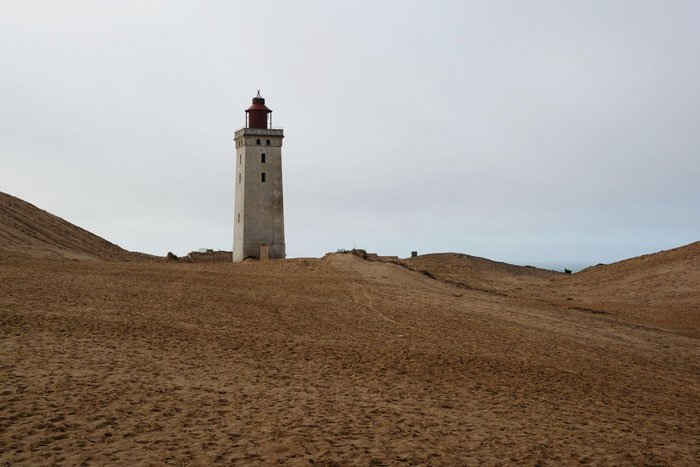
South of Lønstrup, a small town in northern Denmark, you will find the impressive Rubjerg Knude landscape. The highest point is almost 100 m. above sea level. The upper part of the cliff consists of sand – a «migrating» sand dune that is still growing in size. At the same time the sea is eating it’s way into the cliff because of coastal erosion. Rubjerg Knude Lighthouse is still standing on top of the cliff, but the small church that was once a few kilometers from the lighthouse, is gone. This is a place where the ocean and sand is a dramatic evidence to the fact that land is being eaten by the sea and several meters disappears every year, due to coastal erosion. If the tide is very high or if a storm is raging, the seawater sweeps away the foot of the cliff, thus undermining the entire slope. Rainwater and springs then gradually loosen the top part of the cliff, which then later crashes down onto the beach.

From the leaflet in 1998

I have been at Rubjerg Knude twice. First time was in 1998 and then again last year. The landscape has changed. During these years, the sea has moved even closer. It was an astonishing experience to be back. I found two old photos from 1998 to help me remember what it looked like. They were taken in July. Thats why it is more green than on my second visit, which was in February.


My second visit started at the small carpark close to the highest point. From there we walked up the sand dune to the lighthouse. In 1998 the lighthouse was complete with all the buildings. One of them contained a small museum that conveyed information about coastal erosion and the history of the area. Due to erosion it has closed. Only the lighthouse itself is still standing, but it’s almost at the edge of the cliff! It no longer looked as I rememered it.
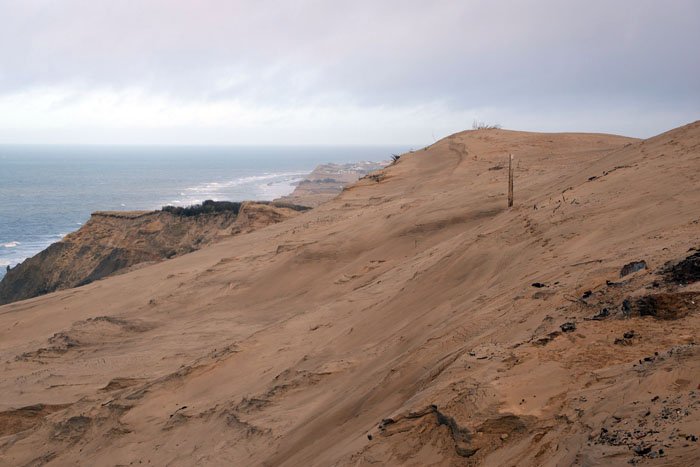
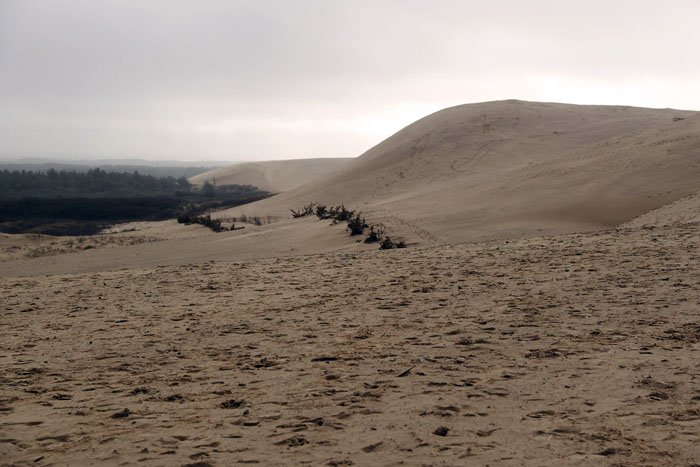
When the Rubjerg Knude Lighthouse was built and turned on for the first time in December 1900, it was built on the cliff’s highest point, which at that time was 60 m. above the sea and more than 200 m. inland. Even at that time there were large sand dunes around it. Since then the sea has moved closer at the same time as the wind blew large amounts of sand up from the cliff. In the end the sand dune was so high that it sometimes was impossible to see the light house from the sea. On August 1st. 1968 the fight was given up and the light was lit for the last time.
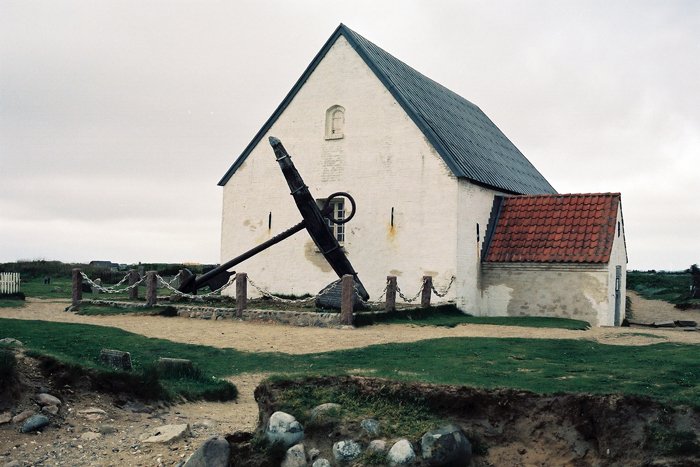
Mårup Kirke in 1998
As we continued on the path along the cliff, we came to the place where the small church – Mårup Kirke – once stood. I hardly recognized the place! The church was still here in 1998, many meters from the edge. The photo above shows the church at it’s original location on top of the 40 metre high cliff. Over the years it has been closer and closer from crashing down into the sea. In order to save it, it has been moved to another location.

The place of the church in 2018
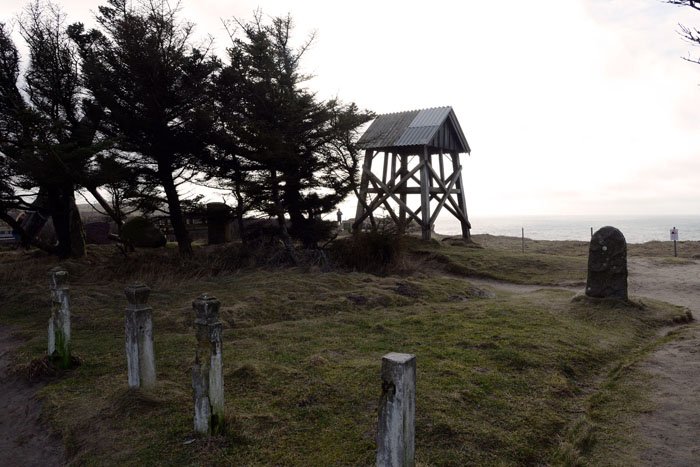
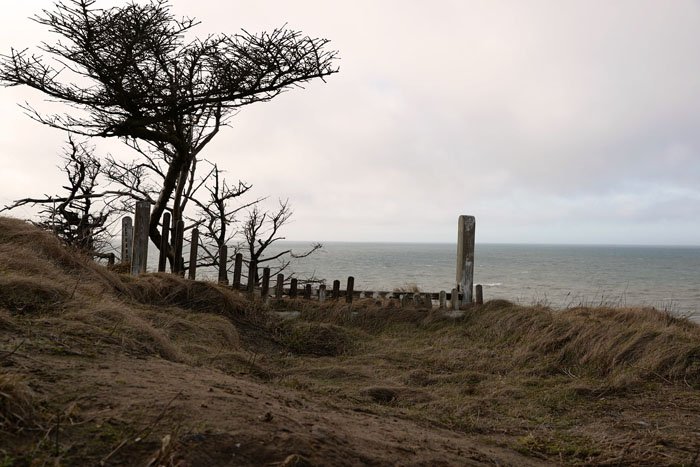
As I remembered the church, it wasn’t anything special. What made it unique was the location in this magnificent landscape, placed as it was on the edge of the cliff, knowing that one day it would slip into the sea. The view from here is impressive. The North Sea right in front. To the south the lighthouse and to the north, Lønstrup. Last year it was a cold and windy day in February. One can only imagine how hard life must have been for the fishermen living here.

View towards the lighthouse in 1998
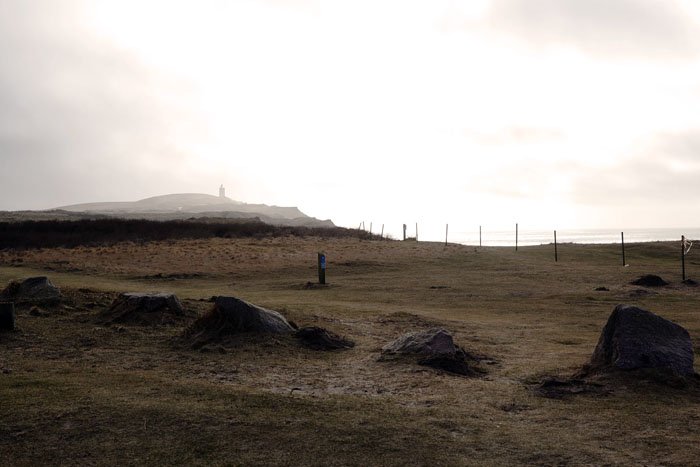
The same view in 2018.
When Mårup Kirke was built in the 13th century, the location was a couple of kilometres from the coast. Just like the lighthouse, erosion had inexorably gnawed away at the cliff and part of the churchyard had already disappeared down the cliff! This erosion has caused skeletal remains to fall onto the beach!
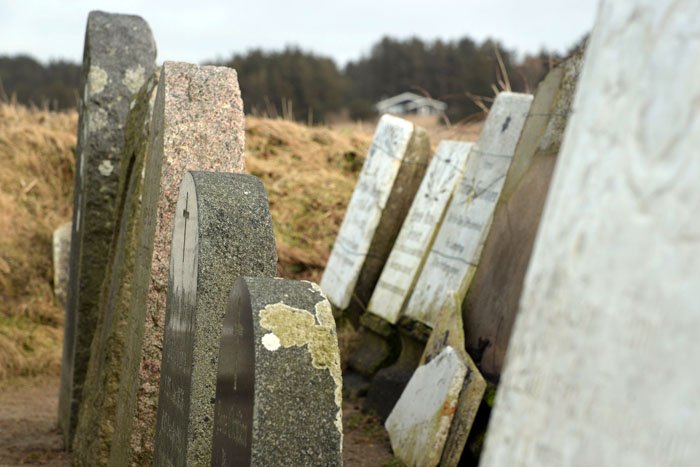
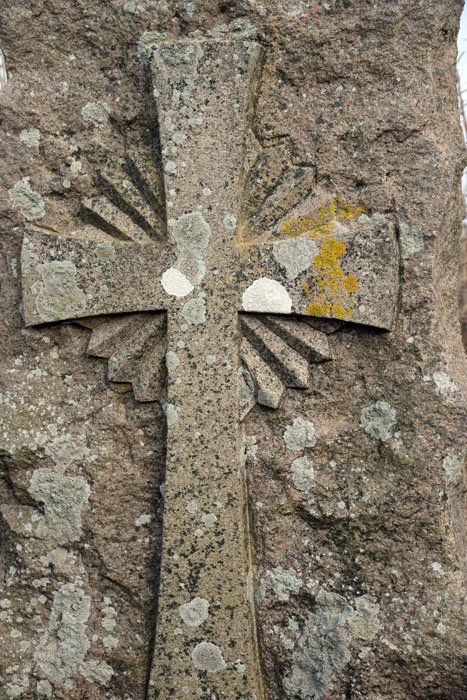
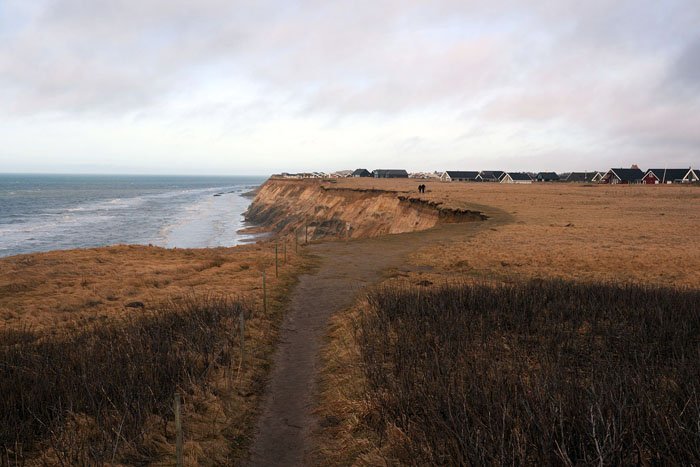
The path towards Lønstrup
Only the bell tower and some tombstones are left. When dismantling the church in connection with the relocation, old tombs were found under the church floor. Archeologists determined that a few of them were older than the church. That testifies that the place has been burial ground before the church were built.


Lønstrup
The path continues to Lønstrup. It’s a nice little place with lots of restaurants, shops, galleries and a popular tourist destination during the summermonths. But I do wonder for how long. As we walked through town, we saw many houses for sale. But Lønstrup was a great place to have lunch and warm up before we returned to the car.

The harbour

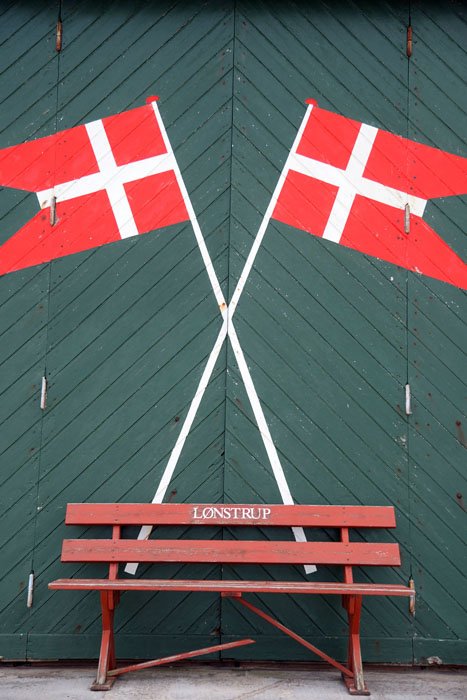
The rescue station
The sea will continue to dig into the cliff and the sand will continue to fly around the lighthouse. In a few years it will slip into the sea and the landscape will keep changing.
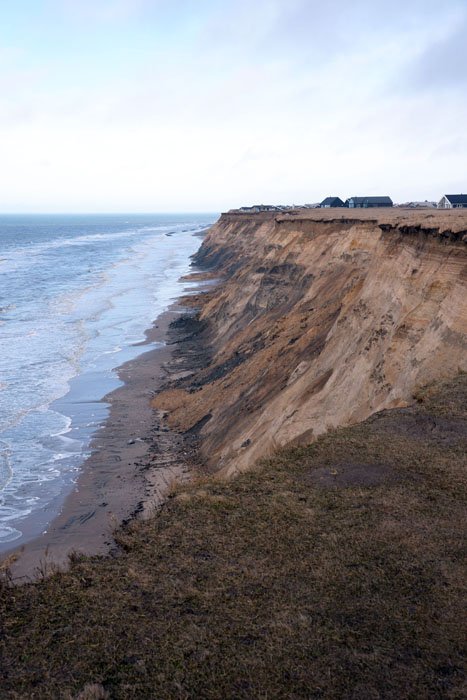
Sources:
https://www.toppenavdnamark.com
Information leaflet from the museum (1998)
Please do follow if you want to keep up with my next travel story. Any upvotes or resteems are hugely appreciated!
Latest travel stories, check out :
Norway – To the «End of Europe»
U.J
Kristiansand, Norway
All the photoes are mine, Ulla Jensen (flickr, Instagram and facebook)
[//]:# (!steemitworldmap 57.474219 lat 9.797959 long Denmark – A lighthouse standing on the edge, waiting to slip into the sea d3scr)Latest content: Travel, Art, Food, Article, Poetry

